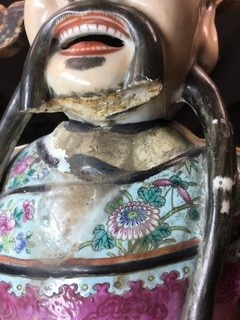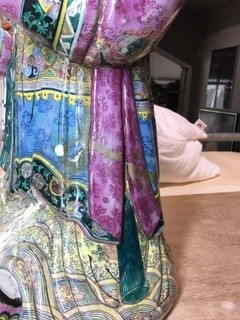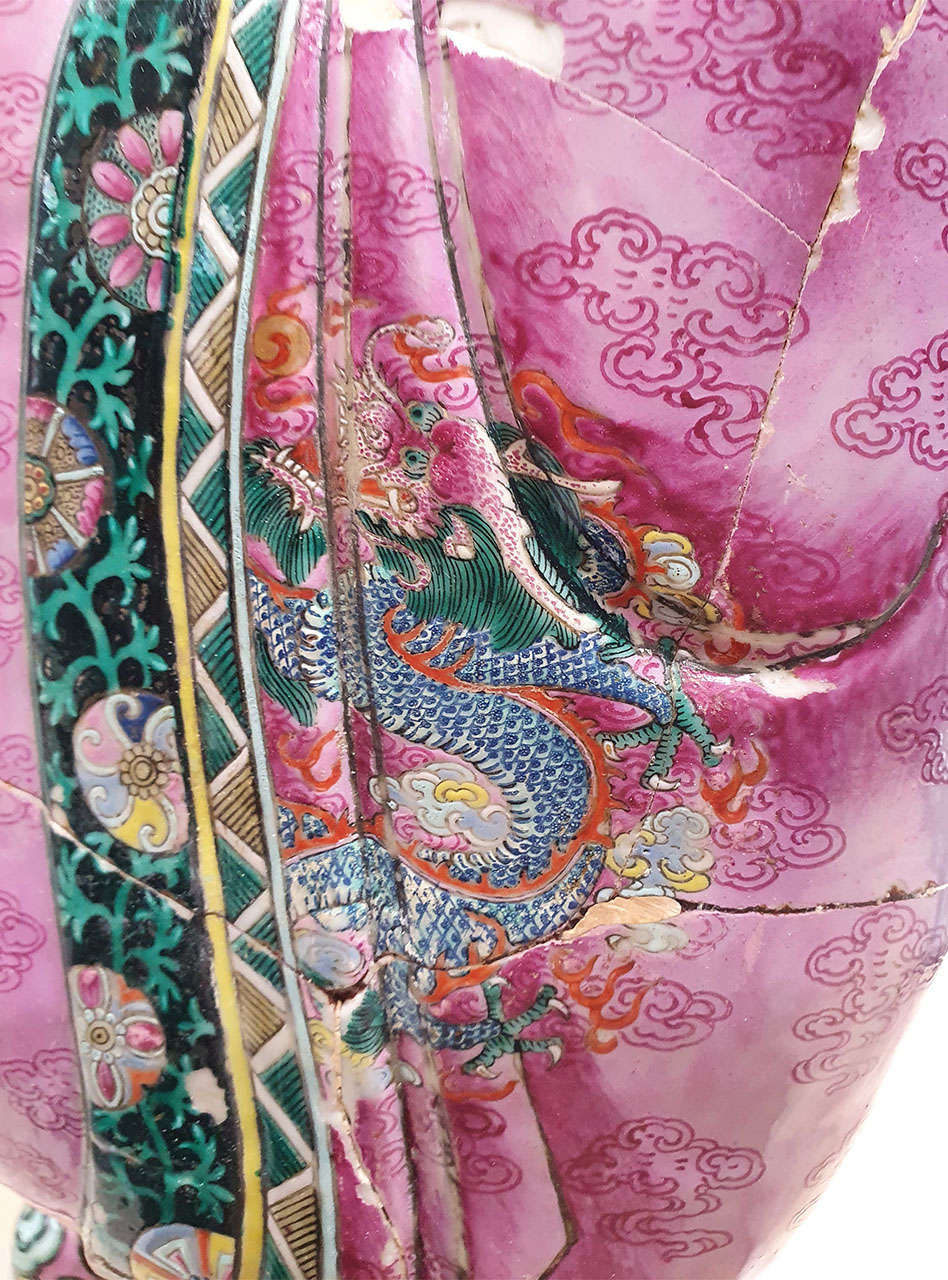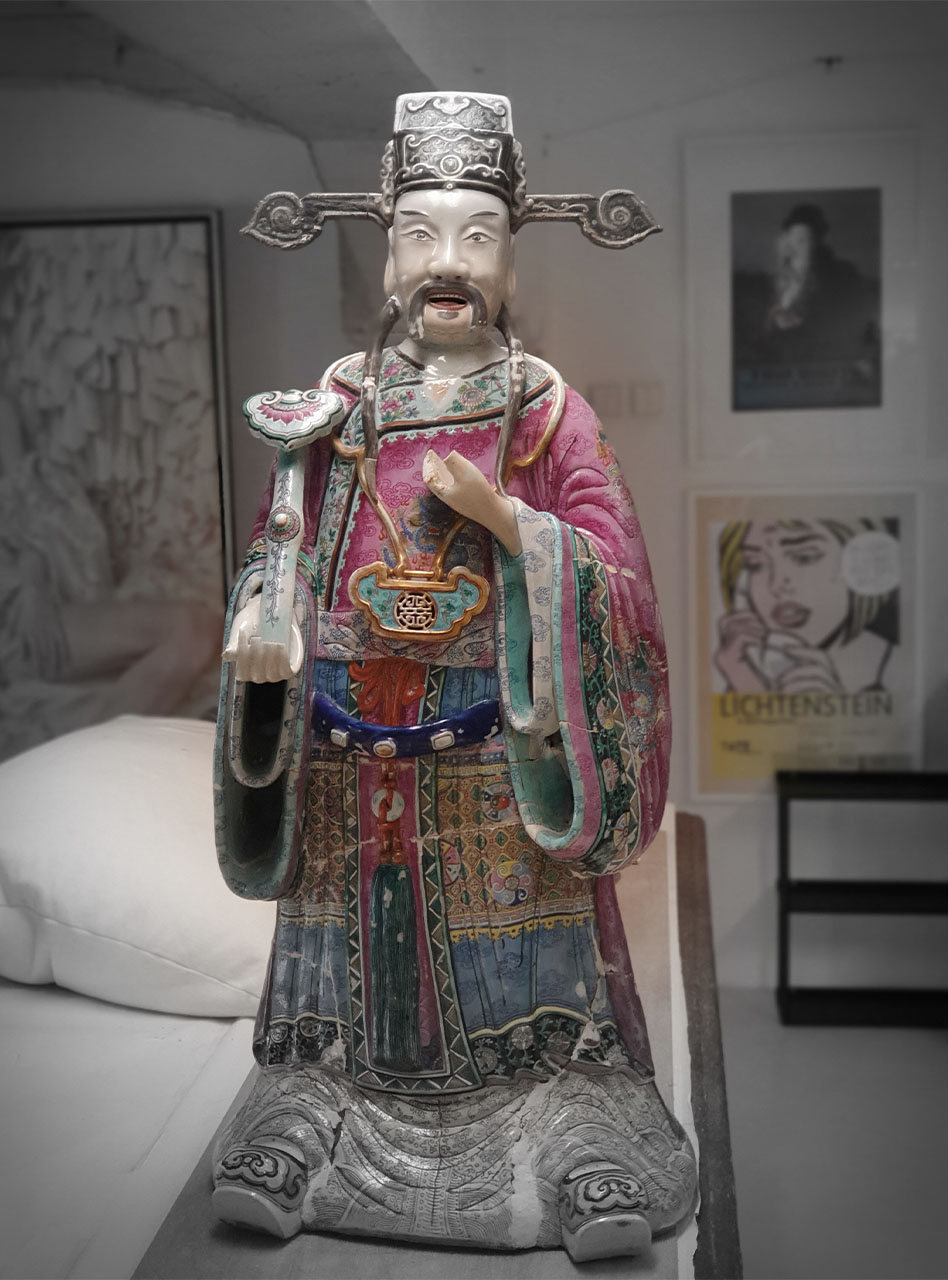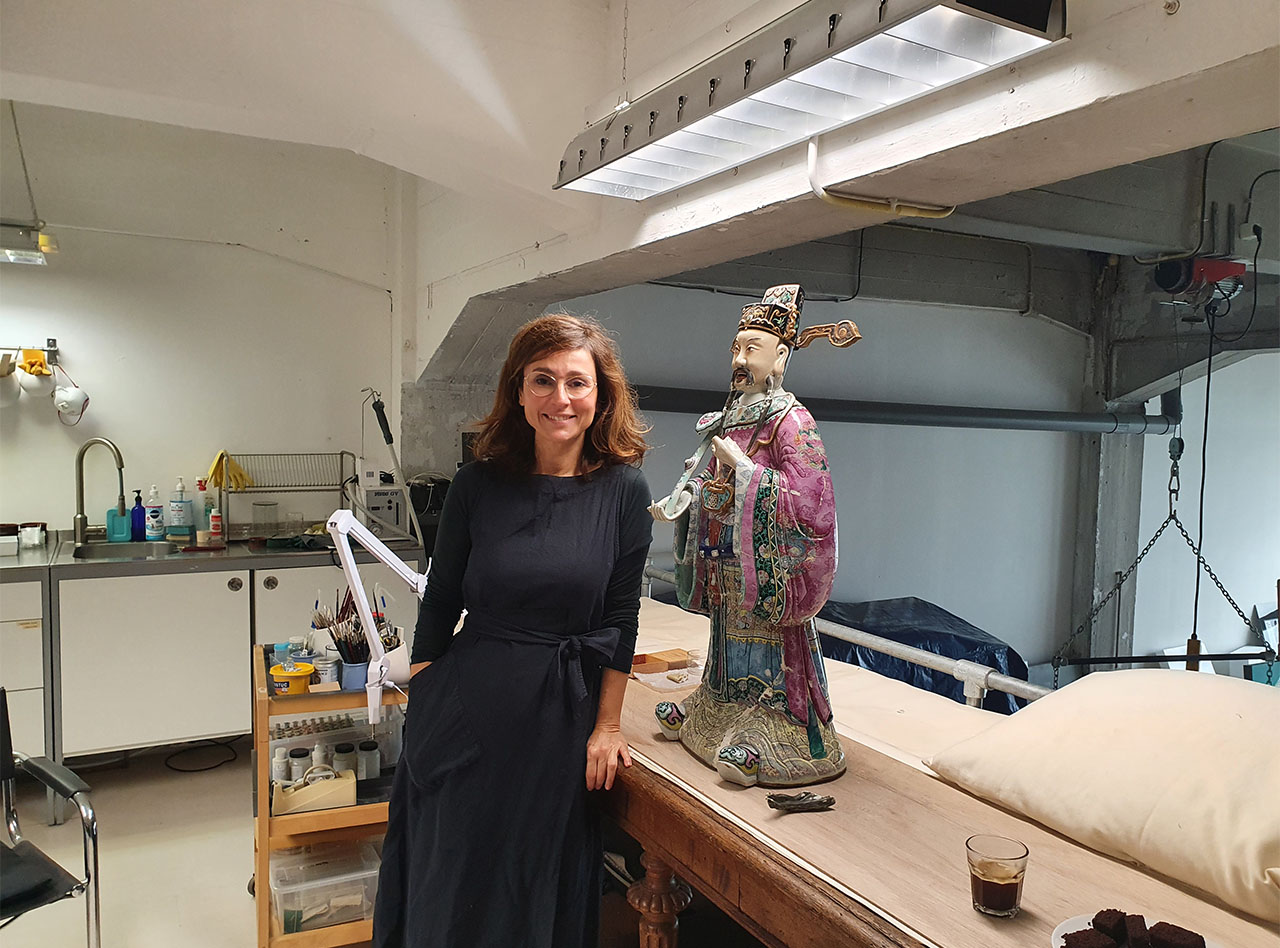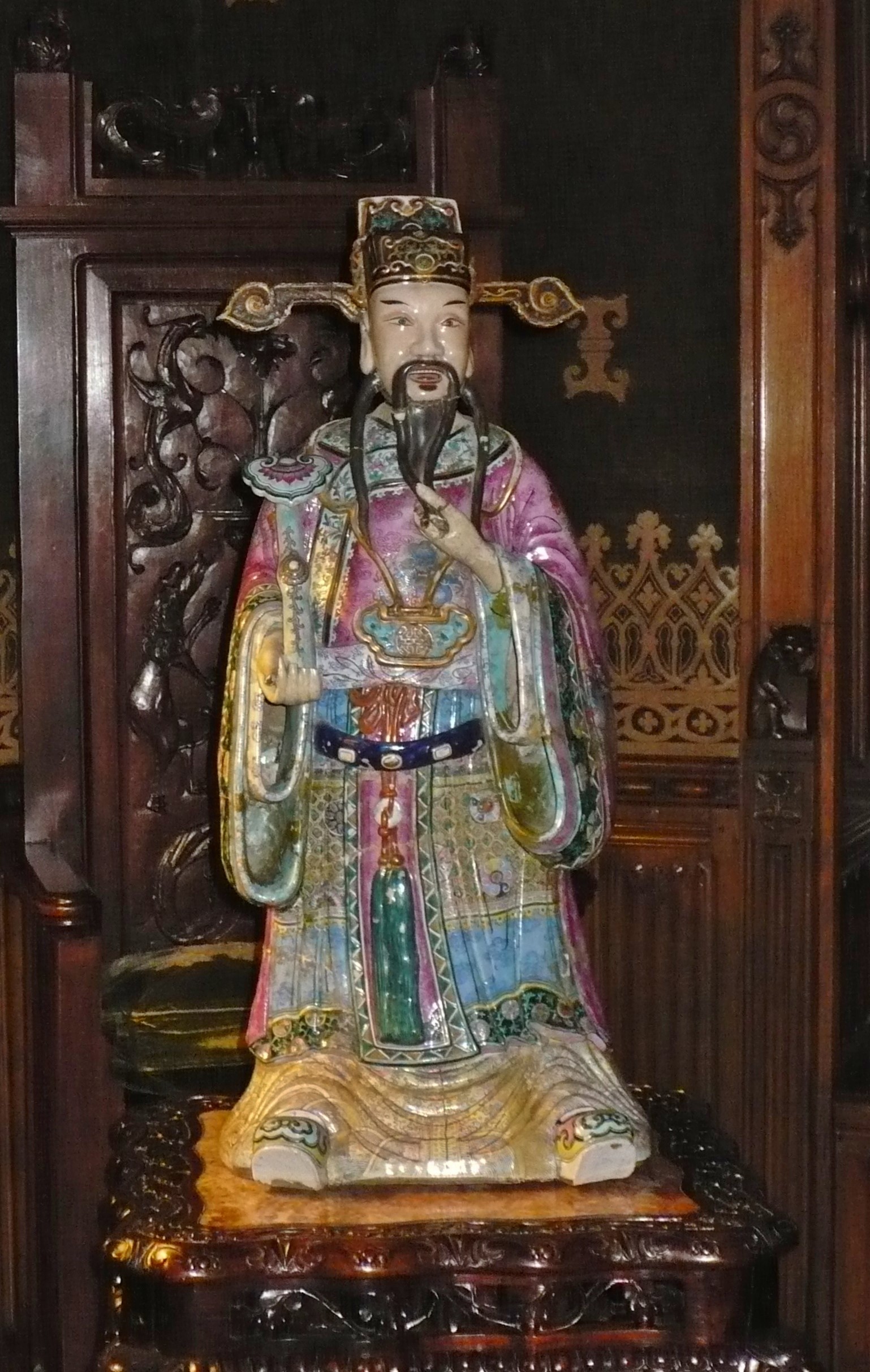
The restoration of "Lu Xing"
The restoration of the Chinese sage
Currently, the porcelain statue called the Chinese Sage "at our castle" resides in the restoration studio of Daniela Stojkoviç in Amsterdam. The statue dates from the Qing Dynasty, is 19th-century and originates from China. Most likely the Baron and Baroness bought it in Paris from one of the many antique dealers with a large collection of Chinoiserie.
Lu Xing is a Taoist god and is part of Fu Lu Shou: three Chinese gods of fortune. These gods are in almost every Han Chinese household. Unfortunately, the other two statues are missing from Castle de Haar. Nor, as far as we know, have they ever been there. Lu Xing is dressed in a mandarin suit and carries a ruyi scepter. As in European culture, the scepter represents power, but also brings good luck.
In the tempered light and fullness of the castle interior, it must have escaped visitors that Lu Xing was so incredibly battered. His fingers were missing, his beard was broken and many cracks ran right across the refined decoration. Only in the restoration studio and after removing the retouches, plaster, glue and lacquers, did it become clear how badly the statue was in. It must have fallen at some point. It has been broken into numerous pieces. Daniela will first make sure the structure is solid again and then meticulously retouch the disturbing cracks.
During the cleaning process, it became clear that in the middle of the back of the sculpture there was an originally circular recess. This had been sealed with plaster and decorated. The function of this hole is unknown to this day. Possibly the statue could be carried or was anchored on a console with and support in the back.
